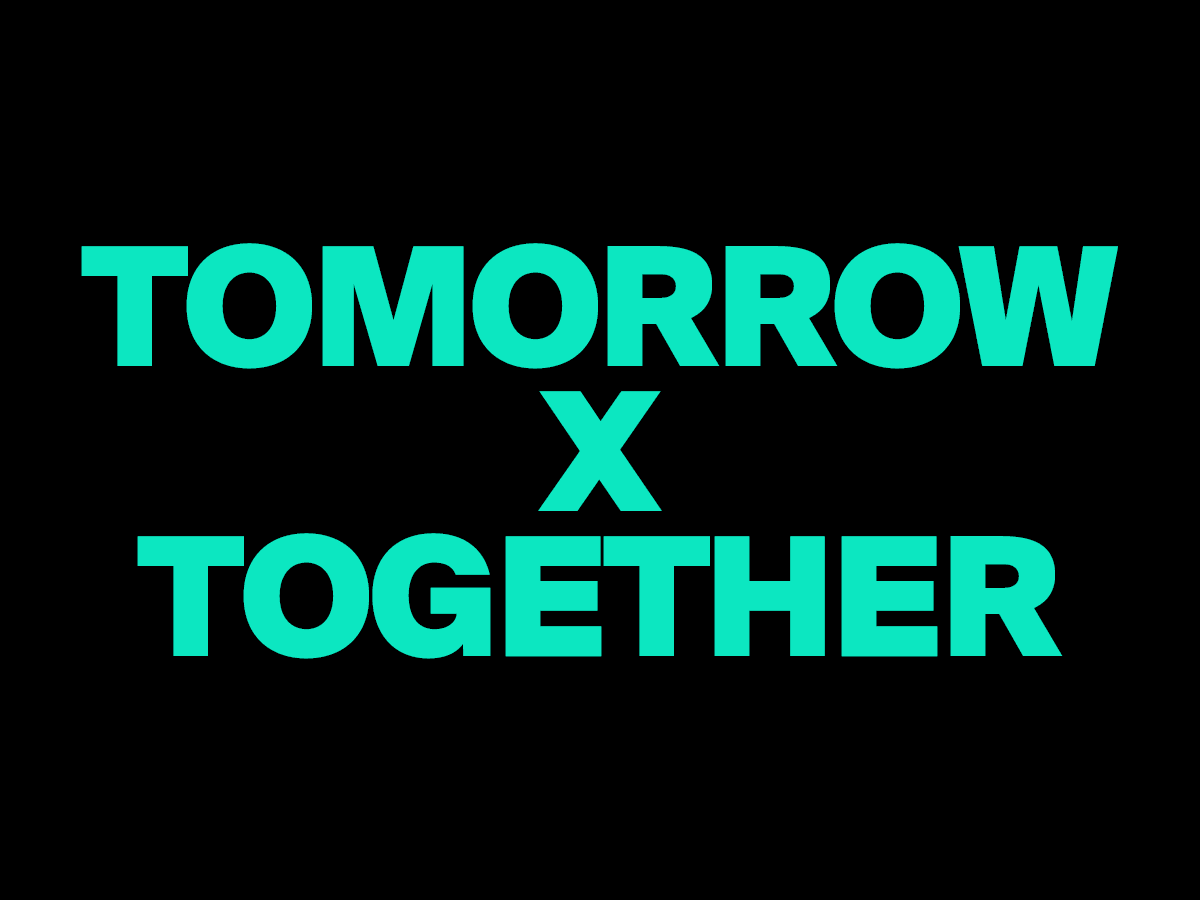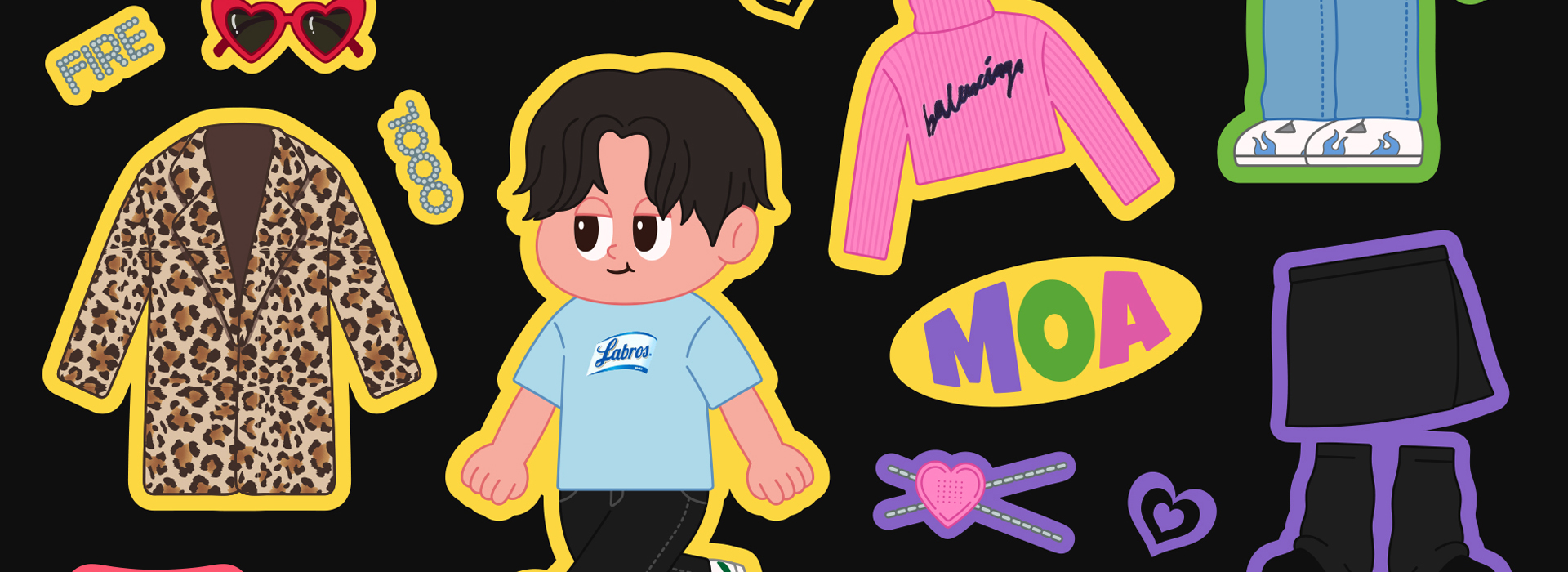
-
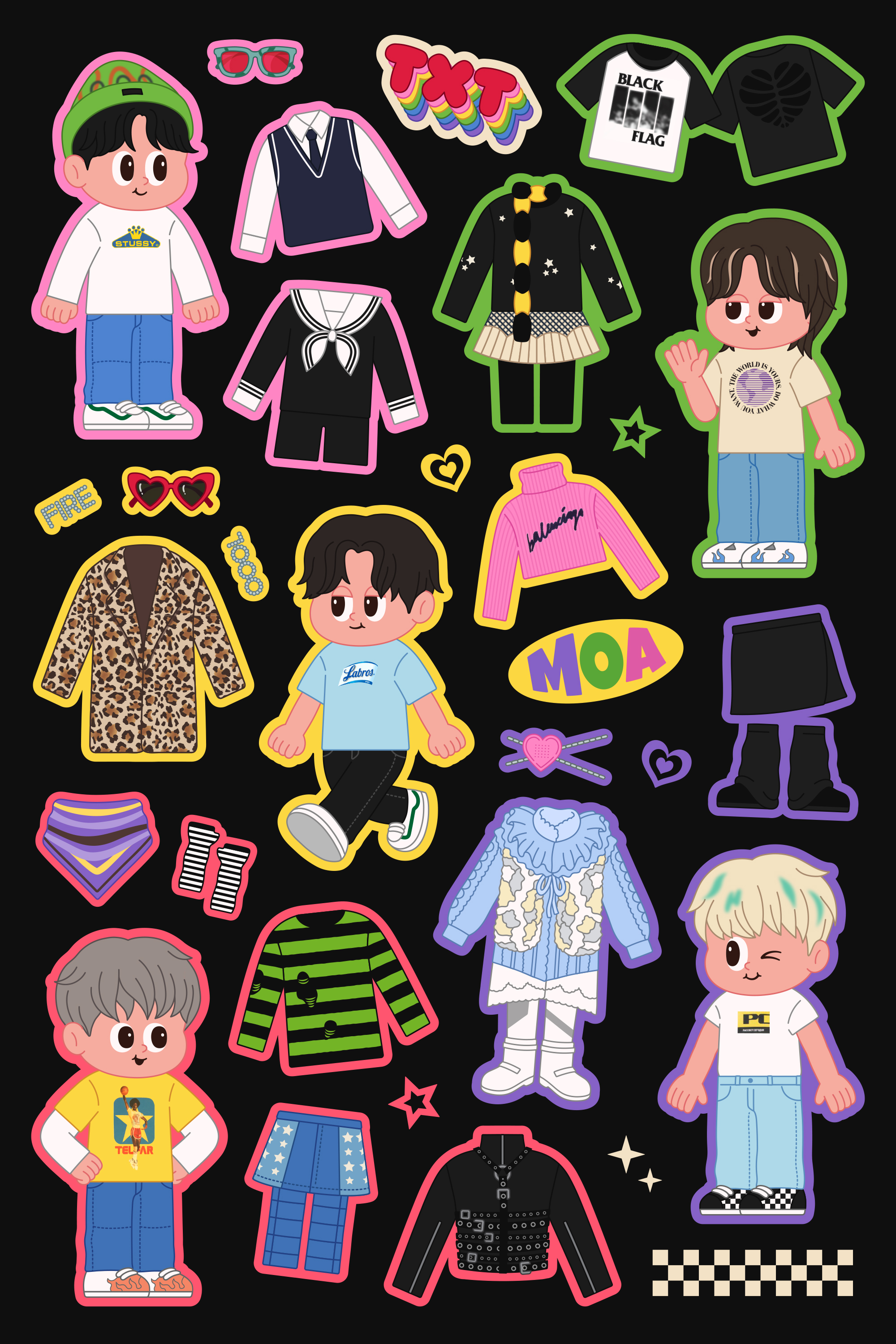 ©️ Liz
©️ Liz
The 2019 video “Introduction Film – What do you do?” introduces the then soon-to-debut members of TOMORROW X TOGETHER. In it, SOOBIN wears a plain gray hoodie overtop a school uniform and white Converse high-tops on his feet. For a member of a group that was already seeing a lot of public attention as the second boy band from HYBE—then Big Hit Entertainment—the outfit might have come across as overly humble. But Cheon Jihye, the leader of BIGHIT MUSIC’s management department, said that this was about using “things that are commonplace for students and which they find comfortable and familiar.” As such, the members of TOMORROW X TOGETHER are seen in the classroom, the subway and the bus, as well as a PC gaming cafe and coin karaoke throughout the “Introductory Film” wearing the clothes you would most commonly associate with teenagers. Then, in their debut song, “CROWN,” the boys sing, “Why is the world treating me like this,” capturing the angst, worries and experience of finding friends like yourself that teens go through. TOMORROW X TOGETHER broke into the realm of other teenagers and intended to position themselves as being the same as their peers, and their clothes were the means by which to impart that sense of identity.
Now, in 2022, the clothes that TOMORROW X TOGETHER are wearing in the concept photos for their latest album, minisode 2: Thursday’s Child, make it difficult to remember anything of their debut image. The photos were released under four themes—MESS, END, HATE and TEAR—and show dramatically different images for the same album: In the HATE version, they wear black, body-fitting leather from top to bottom, leather belts cinched all around their bodies, while the END version keeps their outfits and their surroundings minimalist. According to Rakta, who is in charge of the group’s fashion and styling with the rest of BIGHIT MUSIC’s Visual Creative Team, while the decorative belts in the HATE version may appear over the top, they are meant to express the idea of being “like locking away the part of me that loved somebody” in an echo of the lyrics of “Good Boy Gone Bad.” By contrast, the direction for the END version sought to “maximize the sense of sorrow using makeup that makes it seem like they were crying and giving them simple tops to wear.” Though the fashion statement in TOMORROW X TOGETHER’s debut album three years ago and that seen in minisode 2: Thursday’s Child appear to be polar opposites, there is consistency in the sense that clothing is always used as a means of expressing what the group seeks to convey with each album.
-
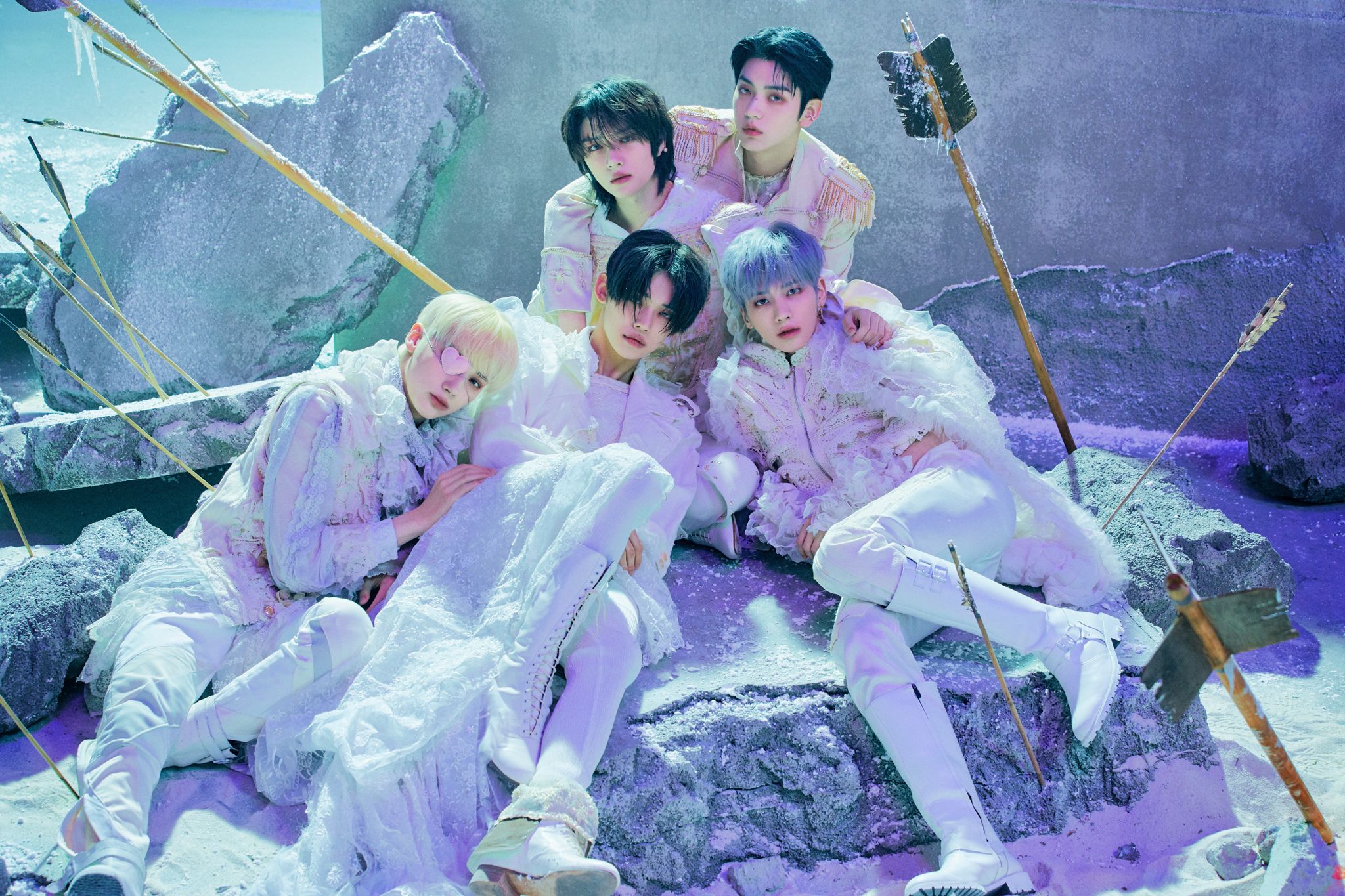 ©️ BIGHIT MUSIC
©️ BIGHIT MUSIC
“We know that fans both Korean and international, and even industry insiders, have unforgettable memories and strong opinions about TOMORROW X TOGETHER’s uniquely conceptual visuals,” Min YeSl, the leader of BIGHIT MUSIC’s marketing team, said. In that sense, the group’s distinctive visual style puts them in a category of their own. TOMORROW X TOGETHER conveys the messages in their albums not only through their music, performances and music videos, but through the clothes they choose to wear as well. Those messages can range from the lyrics of one album to the narratives that run through multiple albums. In the WORLD concept photos, one of the versions for The Chaos Chapter: FREEZE, the members wear white dresses adorned with elaborate ruffles and lace. The way TOMORROW X TOGETHER's fashion choices here differ so conspicuously from in all other concept photos is exactly what makes it so unique to the group—something only TOMORROW X TOGETHER can make work. Rakta said it came about from aiming to express TOMORROW X TOGETHER as having just discovered love for the first time after a fateful encounter, from which she saw them as “like a prince, but a ragged prince who needs to be protected.” For that reason, when they “needed a form of expression that breaks down barriers as not to be the kind of prince typically seen in the media,” she naturally drew on genderless elements, like crochet and lace reminiscent of rococo costume and torn dresses. Moreover, it included the intention to fully convey the way the members of TOMORROW X TOGETHER have an appearance and identity that exudes the “quality of a beautiful but fragile and sensitive boy.” The clothing the group members wear in the photoshoots, performances and music videos supporting each album are also a means of capturing all the content related to them, and are often able to successfully defy expectations. Rakta said she “wanted to make people swell with emotion” and had intended to “try and add a small dose of nonconformist elements.”
The FIGHT version of the concept media for The Chaos Chapter: FIGHT OR ESCAPE used a casual fashion look in line with the then popular readoption of early 2000s fashion. “I thought the boy who found love in The Chaos Chapter wouldn’t fear getting hurt,” Rakta explained about her direction. “But then, if you look at skateboarders, even when they fall and hurt themselves, they get back up and brush it off with a laugh and skate again because they have the joy of skateboarding in them. I thought the two were similar that way.” The ESCAPE version is similar: It shows the members as rebellious boys in a shop full of kitschy colors and glitter effects reminiscent of the “LO$ER=LO♡ER” music video and in line with the idea of them “being unable to be with the one they love,” Rakta explained. To that end, the clothing also channeled “1990s Harajuku street fashion, using layers of loud colors and patterns.” The Chaos Chapter: FIGHT OR ESCAPE is a repackaged version of The Chaos Chapter: FREEZE, and its lead single, “LO$ER=LO♡ER,” is itself a continuation of the earlier album’s lead single, “0X1=LOVESONG (I Know I Love You)” featuring Seori, and while the concept photos for each album feature radically different styles, the two albums are connected by one shared story. This is how TOMORROW X TOGETHER eventually came to have a characteristic style even though they have a different style every time. The group’s fashion is so different for each album that it’s fair to call it a drastic change, but the lyrics, music videos and other album-related content allow each style to be compressed and incorporated into TOMORROW X TOGETHER’s overall style.
Beyond simply expressing the themes of each album, all of TOMORROW X TOGETHER’s fashion choices have been distilling what the lives of other people their age are like since the group debuted in 2019. Whether it’s school uniforms or dresses, the outfits TOMORROW X TOGETHER puts on for each album are ultimately a means of expressing parts of a boy’s life like school, love and breakups. They represent their generation on a microscopic level, unlike typical K-pop, as when, for example, they “exemplify the bitter emotions of very specific situations, like in ‘Ghosting,’ where someone isn’t checking their messages, in a single song,” Kim Boram, a member of the BIGHIT MUSIC A&R team, explained. And people can tell all that just by looking at the group’s outfits. “We Lost the Summer” provides one such example: Rakta explained how YEONJUN’s style in the music video reflects “the trend of colorful clothes, not bound to any gender, worn by TikTokers who have their own fanbases and become models for house brands.” In the video, YEONJUN has pastel pink hair, a hair clip, bold earrings and tattoos, and debates in his room whether to wear a stunning leopard-print jacket or a white one with colorful lettering while taking selfies in the mirror, capturing the image perfectly. Rakta also explained that “YEONJUN has the most interest in and enthusiasm towards fashion of all the members,” and the fact that all of them actively talk with their fans on TikTok in real life provides a realistic point of overlap with the way they come across in the music video, making it feel more plausible. The scenes of them having group video calls all together and dancing with masks on were a result of a conscious effort to “reflect reality as it happens.”
-
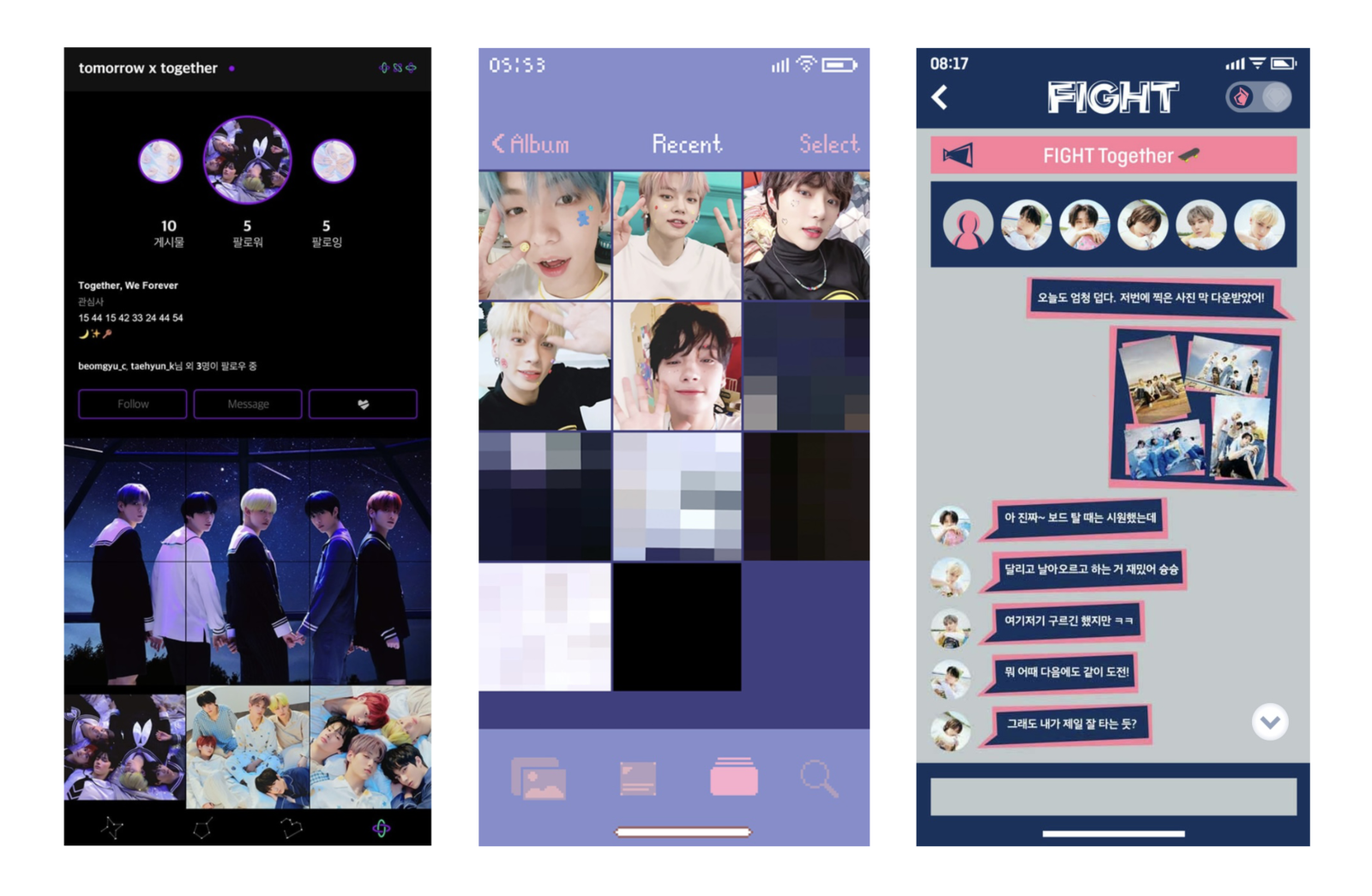 ©️ BIGHIT MUSIC
©️ BIGHIT MUSIC
The same can be seen in the way TOMORROW X TOGETHER’s outfits, including those they wear in “0X1=LOVESONG,” take cues from the emo fashion of the early 2000s that has lately been reinterpreted by Generation Z, as well as the eboy look. The emo fashion and silhouettes of the slim members throughout The Chaos Chapter represent the sadness pervasive in the lyrics and act as a multifaceted device that clothes them in what emo listeners wore back then to intuitively convey both the music that Gen Z listens to and how they express themselves. In this way, the group’s style becomes a message allowing people to experience the tastes and way of life of people of this generation the world over at a glance. And the power their fashion carries is enhanced because the group’s concept photos are revealed through platforms that are well-suited to mobile devices, like Instagram feeds, live streams, and mock messaging apps. Min said they thought of this method because “people see and experience everything through mobile these days,” and everything TOMORROW X TOGETHER wants to say with their outfits comes together when it’s spread through the channels most familiar to fans in the group’s generation. Rakta said “it was interesting the way fans saw the images presented in message format and said, ‘I’m MOA Kim,’ or, ‘The members invited me to a chat,’” pointing out that these, too, were methods of distribution that were intended to keep in step with the habits of fans. Importantly, Min said that “the production of an album starts with listening to what the members have to say”: Throughout the process, the members’ ideas lead to lyrics, music, performances, and the clothing and visual elements that best express those. Perhaps the reason the group’s clothes feel so TXT-esque is that the organically connected production starts from the members themselves. The small stories that the members tell eventually lead to major changes in their image. TOMORROW X TOGETHER’s fashion is both a visual history of that change and an entrance into the world they create—in other words, it is their own song, “MOA Diary (Dubaddu Wari Wari),” visualized: a fashion capturing “our own code,” which older generations won’t understand.
Unauthorized reproduction and distribution prohibited.
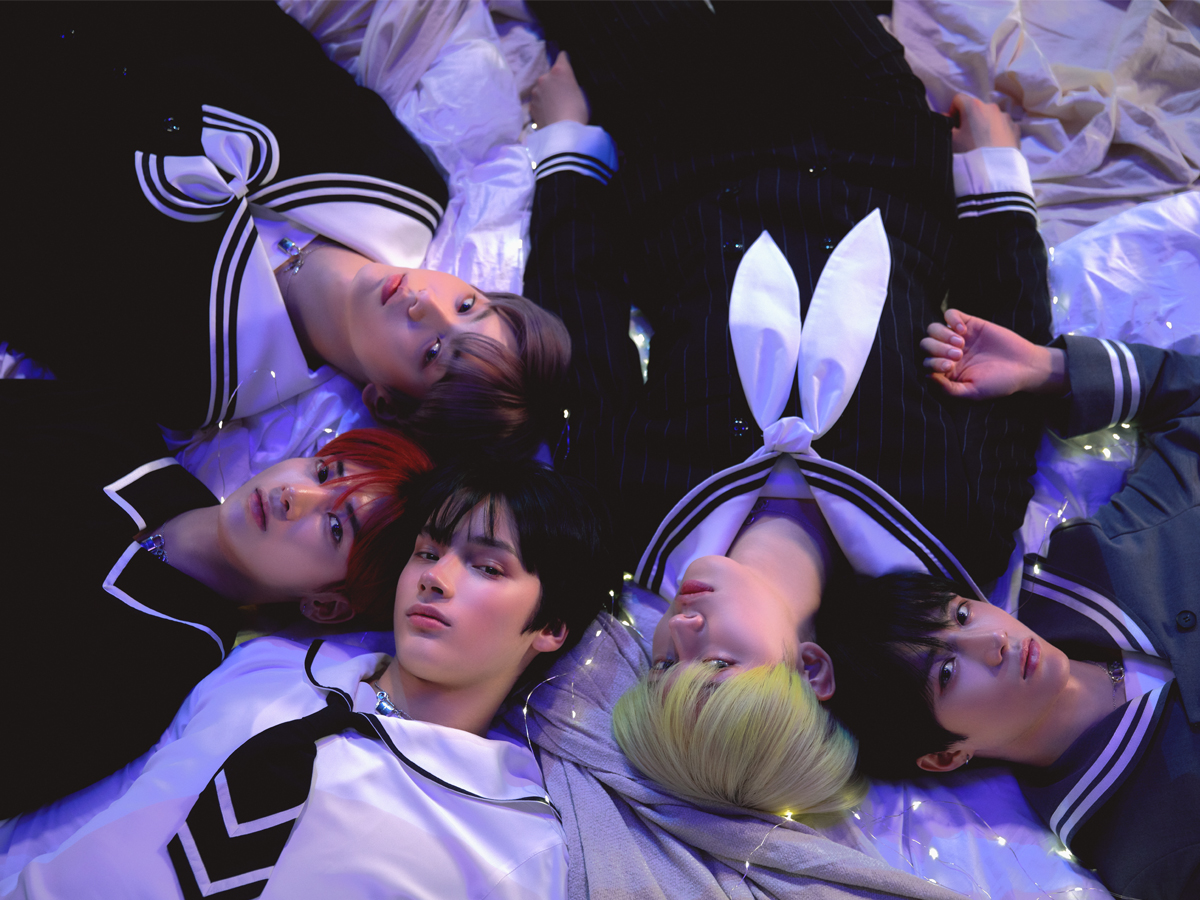
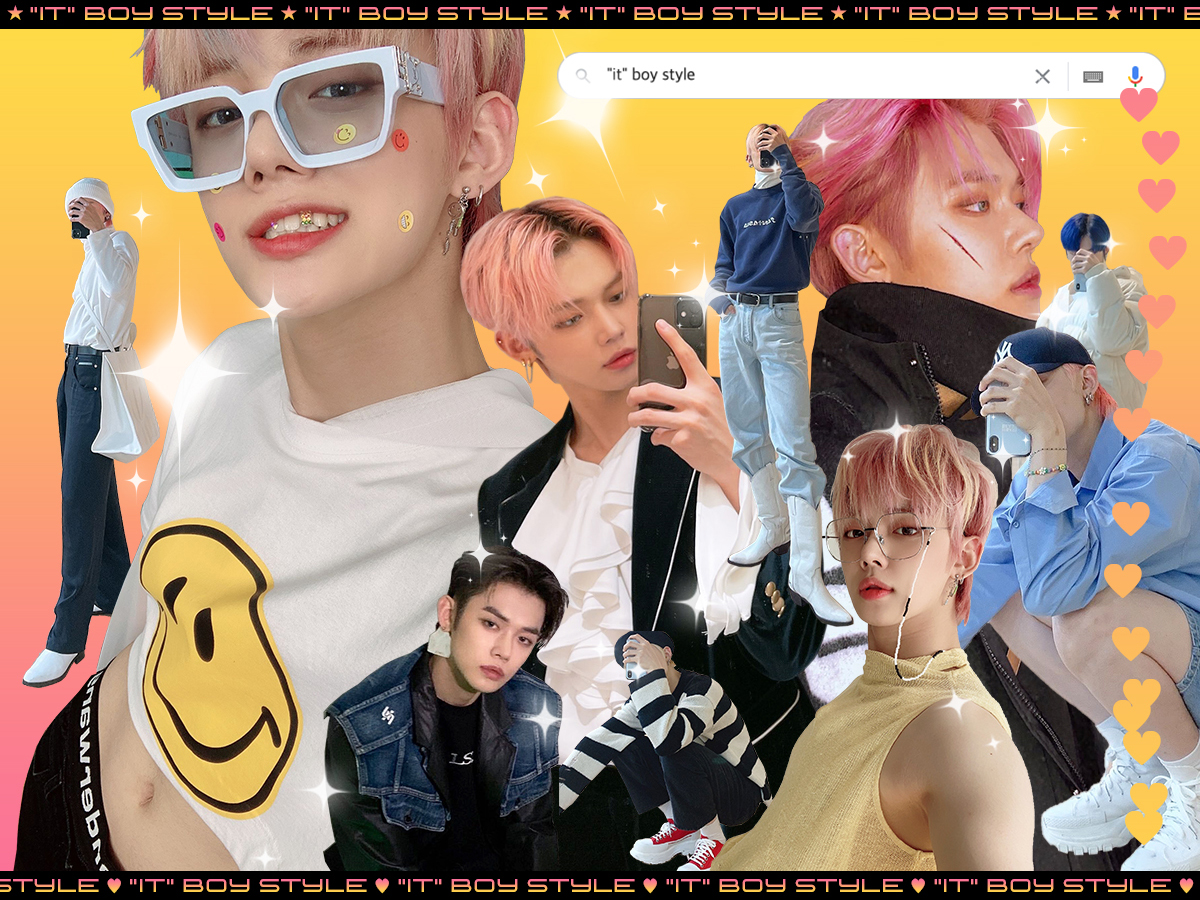
- TXT is advocating Gen Z’s music2021.06.16

- TXT’s surprising turning point2022.05.10
